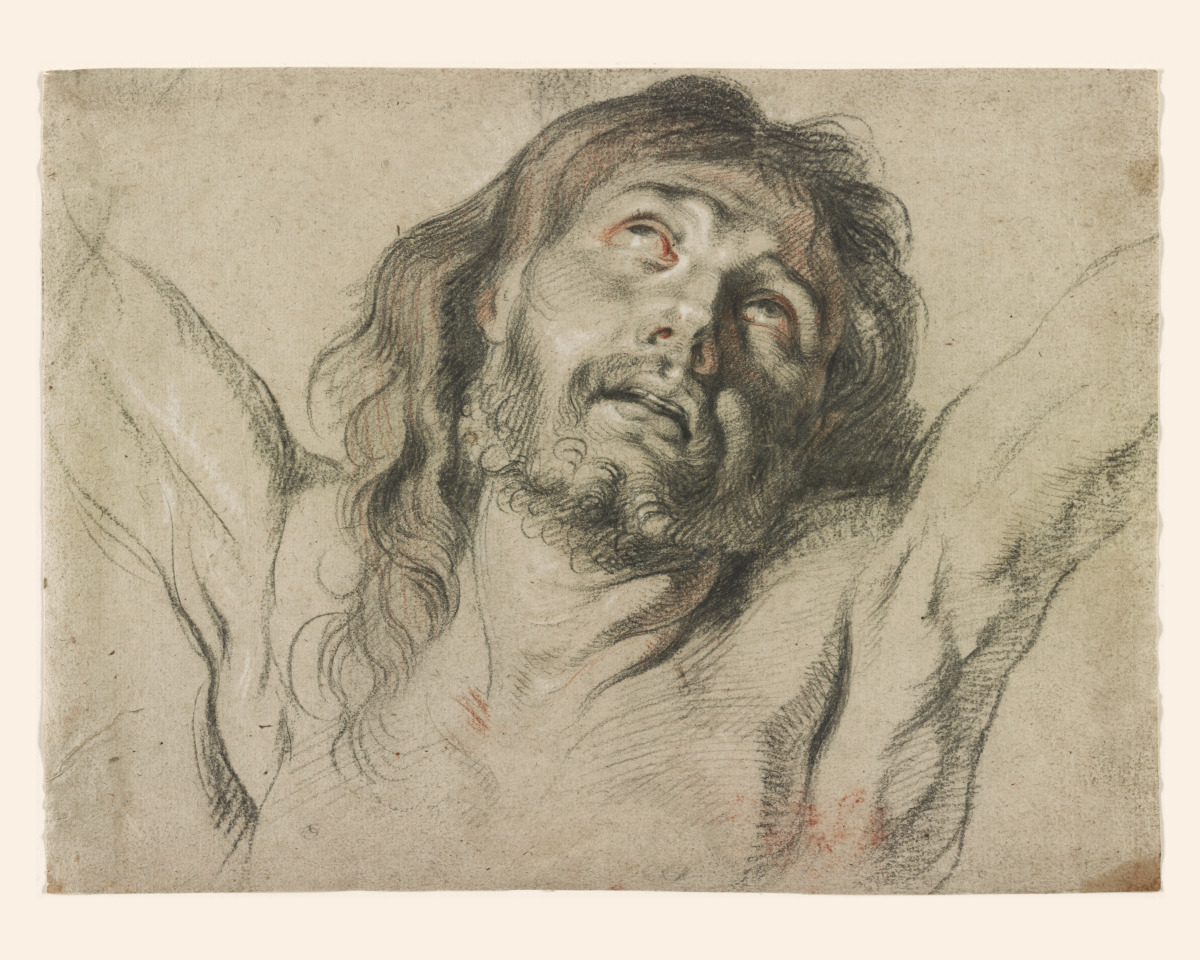About this image...
Image Title: Head Of Christ On The Cross, 1610
Creator: Rubens, Peter Paul, 1577-1640, after this artist
Date: After ca. 1610
Notes: In the 1883 catalogue of the Rudolf Weigel sale, this drawing was erroneously attributed to Antony van Dyck, the attribution of which has remained in the catalogue of the . Although the sheet bears some iconographical resemblance to Crucifixions by van Dyck, J. Richard Judson correctly connected the work with a painting by Rubens of Christ Expiring on the Cross in the Koninklijk Museum voor Schone Kunsten in Antwerp (inv. no. 313: Judson, pp. 123-126, cat. no. 30, fig. 96). Judson dated the painting c. 1610-12. The drawing had already been attributed to Rubens by Burchard on the basis of a photograph in the 1883 Weigel sale. Also, on the basis of a photograph and not knowing the drawing's whereabouts, Judson sustained the attribution to Rubens. Although connected with the painting in Antwerp, the style and medium of the drawing in the indicate that it is not by Rubens himself. Anne-Marie Logan, noted scholar of Rubens's drawings, rejects the attribution to the master (See email correspondence 2014 in files). Rubens's physiognomy is less classical and robust (compare, for example, the study for the figure of Christ in the British Museum [Judson, fig. 92] in which the lines for the hair are sketchier and the face less corporeal). In addition, the use of red and black chalk was used by Rubens when he was in Italy, copying Italian works of art (see Jaff?. Rubens in Italy, figs. 18-19, after Michelangelo Louvre) but less so when he had returned to Flanders. Rubens normally employed black chalk that he heightened with white. In fact, Anne Marie Logan has suggested that the red on one drawing in black, red, and white chalk (Vienna Albertina) was added later (see Rubens exh. 1977, p. 405). Thus, the present drawing must be a copy of Rubens and is possibly a copy after the "very fine" drawing in black chalk noted in the Ottley collection in 1883 (now lost and unphotographed, see Judson, p. 127). Without knowing the medium of the lost Rubens sheet, one cannot say whether Rubens had used three colors in his original sheet or whether this is an exact copy of the lost drawing. The strong contours and classical modeling as well as the addition of red and white chalk are characteristics of Bolognese artists of the early seventeenth century. Without knowing the original drawing by Rubens, it is not possible to say whether the copyist was Flemish or Italian, but was someone with access to Rubens's drawings.|R. Weigel, Handzeichnungen ber?mter Meister aus der Weiglel'schen Kunstsammlung. In treuen [von J. C. Loedel] in Kupfer gestochenen Nachbildungen, Leipzig, 1854-61, VIII.|J.G. von Quandt, "Besprechung von: "Handzeichnungen ber?hmter Meister aus der Weigl'schen Kunstsammlung..herausgegeben von Rudolph Weigel. Leipzig, 1855", Archiv f?r die zeichnenden K?nste (re-ed. by r. Naumann), II, Leipzig, 1856, p. 103, no. VIII.|J. Richard Judson. Rubens. The Passion of Christ, Corpus Rubenianum Ludwig Burchard, part VI, The Passion of Christ, Turnhout, Belgium, 2000, p. 127, cat. no. 30a. fig. 95.|Condition assessment: Hinged and therefore cannot see verso. Vertical crease toward top. Dirty with some oil stains at edges. Some red smudges lower toward right
Related Names: Van Dyck, Anthony, 1599-1641
Subjects: Crucifixions
Jesus Christ--Death & burial
Original Media: Drawing
Collections: Drawings (Master) » more info...
About our unframed prints...
Our prints consist of heavy-stock, semi-gloss paper for the best possible combination of color vibrancy and durability. The brilliant colors we achieve are due in large part to the unique inks we use.


